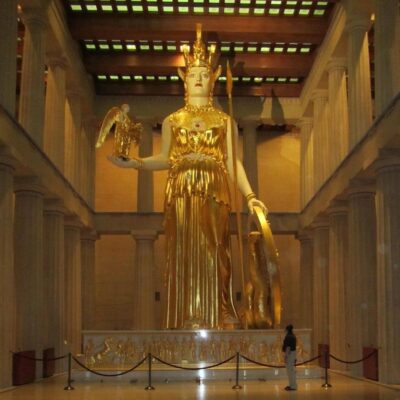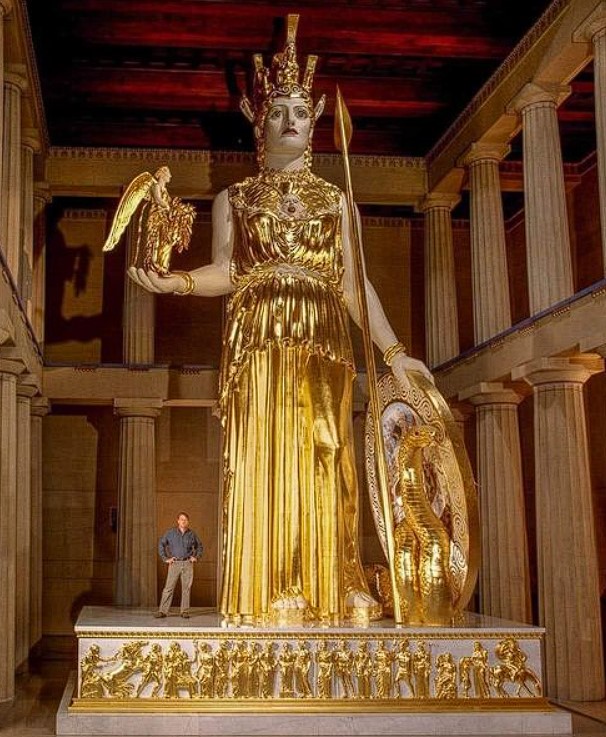The Magnificent Statue of Athena was a masterpiece of ancient Greek art and a symbol of cultural and religious devotion. Created by the renowned sculptor Phidias in 438 BC, this stunning creation stood as a testament to the artistic brilliance of its time.

1. The History Behind the Statue of Athena
1.1 The Creation by Phidias
The statue of Athena was crafted by Phidias, one of the most famous sculptors of ancient Greece. Using chryselephantine techniques—a combination of gold, ivory, and wood—the statue was designed to embody both beauty and divine majesty.
1.2 Athena: The Protector of Athens
Athena, the goddess of wisdom and war, was the patron deity of Athens. Her statue symbolized her role as the city’s protector, representing strength, wisdom, and victory.
1.3 The Significance of 438 BC
The statue was completed during Athens’ golden age under the leadership of Pericles. This period marked the height of cultural, political, and artistic achievements in the city.

2. Architecture and art about The Magnificent Statue of Athena
2.1 Chryselephantine Technique Explained
The use of gold and ivory gave the statue its radiant and lifelike appearance. These precious materials were supported by a wooden core and a bronze framework, creating a masterpiece of both art and engineering.
2.2 The Monumental Size
Standing over 12 meters tall, the statue was a towering presence within the Parthenon. Its sheer size and intricate details made it a wonder to behold.
2.3 Placement in the Parthenon
The statue was strategically placed at the center of the Parthenon, surrounded by intricate friezes and sculptures. This central location highlighted Athena’s importance to the Athenians.

3. The Legacy of Athena’s Statue
3.1 Loss of the Original Masterpiece
Unfortunately, the original statue has not survived the passage of time. Its disappearance is attributed to centuries of invasions, looting, and natural decay.
3.2 Replicas and Artistic Representations
Smaller replicas and artistic references keep the memory of this iconic statue alive. These reproductions provide valuable insights into the grandeur of the original work.
3.3 Cultural and Historical Impact
The statue remains a symbol of ancient Greek art and civilization. It represents the cultural prosperity and religious devotion of Athens during its classical period, continuing to inspire admiration and study worldwide.
See more: The Mammoth Bone Huts of Mezhyrich: A Prehistoric Marvel
Conclusion
The statue of Athena in the Parthenon was more than a masterpiece; it was a cultural icon that celebrated the strength, wisdom, and prosperity of ancient Athens. Though the original statue has been lost to time, its legacy endures, reminding us of the artistic and cultural achievements of one of history’s greatest civilizations.


CÁC TIN KHÁC
Mark Twain & Olivia Langdon: A 36-Year Love Story Filled with Laughter and Devotion
The Tollund Man: A 2,400-Year-Old Mystery Preserved in a Danish Bog
Skara Brae: Scotland’s Hidden Neolithic Village
Porta Nigra: The Hidden Depths of Trier’s Iconic Roman Gate